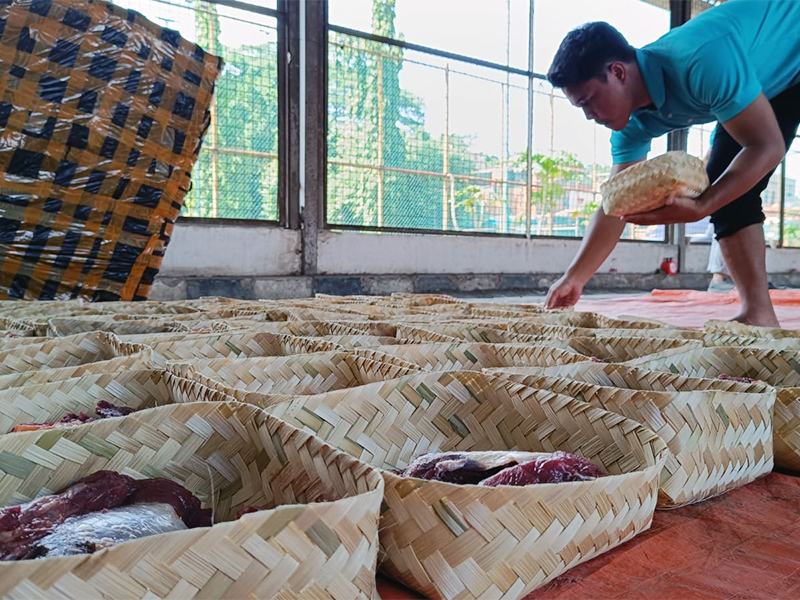

Thursday, May 22nd 2025 Reporter: Aldi Geri Lumban Tobing Translator: Nugroho Adibrata 277

(Foto: Ilustrasi)
The Jakarta Environment Agency urges all residents and qurban committees in Jakarta to implement a green with eco packaging during Idul Adha the Day of Sacrifice 1446 Hijri.
The principle is to carry out the sacrifice without polluting the environment
This appeal refers to the Gubernatorial Regulation Number 10/2022 on Guidelines for Implementing Animal Sacrifice.
Jakarta Environment Agency Head, Asep Kuswanto said Eco Qurban is the practice of organizing the slaughter of qurban animals based on principles of environmental protection and management, conducted at the slaughter site.
According to him, Gubernatorial Regulation 10/2022 regulates the handling of liquid and solid waste that can be implemented to minimize environmental pollution.
"The principle is to carry out the sacrifice without polluting the environment during the execution and afterwards. There should be no waste such as blood, entrails, or other meat cuts disposed of carelessly into ditches, drains, or rivers," he explained, Thursday (5/22).
He explained that if the waste is not handled properly, it can cause unpleasant odors, disturb the comfort of residents, and even endanger health and damage the aquatic ecosystem.
Jakarta Environment Analyzer, Ria Triany said that in terms of technical management, liquid waste from qurban animals such as blood needs to be handled safely and environmentally friendly, one of which is by burying it in a watertight pit.
She explained the specifications of the collection pit could be designed based on the estimated blood volume per kilogram of animal weight, which is 60 ml/kg of animal weight.
She went on to say that 10 cows, each weighing 500 kilograms, are estimated to produce 0.3 cubic meters of blood, so a containment hole with a minimum capacity of 0.3 cubic meters can be designed with dimensions of 1.2 meters deep, 0.5 meters long, and 0.5 meters wide.
"After being filled, the waste needs to be treated with disinfectants such as chlorine tablets or quicklime," she continued.
Afterwards, the water used for washing meat must be collected in a septic tank designed to prevent leakage and have a safe distance from drainage channels. This water also needs to be treated with disinfectants to ensure environmental safety.
"Residual blood or fluids from the cutting area should be cleaned using absorbent materials such as sawdust, rice husk, activated charcoal, or zeolite. Water that is no longer mixed with blood can be reused, for instance, for watering plants," she added.
As for parts of the animal that are not used, their management must be done wisely. If land is available and the number of animals is not large, the leftovers can be buried in the ground with the addition of disinfectants. Another alternative is to process them using black soldier fly maggots.
If the number of qurban animals is many and the location is inadequate, the remains of the animals must be treated as special organic solid waste because they may contain pathogens.
"This waste must be separated from regular organic waste and non-organic waste, and then destroyed through incineration," she added.
Lastly, food consumption during the sacrifice should also be managed to avoid increasing waste. It is recommended to cook according to needs and to implement a buffet concept to prevent excess food leftovers.
"Eco Qurban also encourages the use of environmentally friendly packaging for distributing meat. Use reusable containers such as bamboo besek, banana leaves, or personal reusable food containers instead of single-use plastic," she stated.